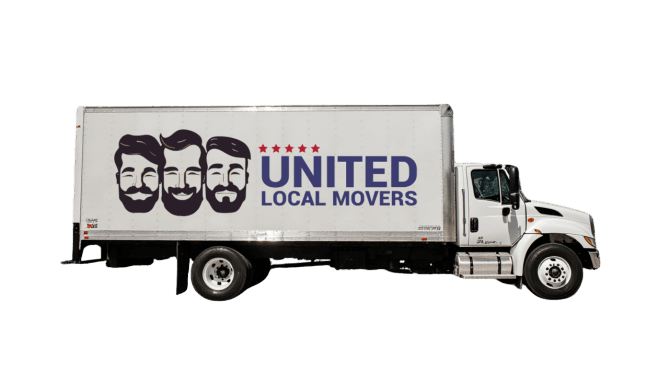No one wants to think about damaged or lost items during a move, but even reputable companies can encounter accidents. That’s why the claims process exists — to protect you and help recover the value of what was lost. Unfortunately, many customers don’t fully understand their rights or how to handle the process effectively. This guide will walk you through every step to ensure you’re prepared if something goes wrong.
Why Understanding the Claims Process Matters
When an item is lost or damaged during a move, time is critical. Most claims have deadlines, and movers are legally required to follow specific procedures. Knowing how the process works puts the control back in your hands — not the moving company’s.
Even if your mover is fully licensed and insured, a successful claim depends on documentation, communication, and meeting deadlines.
What a Claim Actually Is
A claim is a formal request to the moving company to compensate you for loss or damage to your belongings during transport. It can include:
- 🧳 Lost items that were on your inventory list but never arrived
- 🪑 Damaged furniture, electronics, or fragile goods
- 🖼️ Items that arrived broken, scratched, or missing parts
There are two main types of claims:
- Loss claims: The item never arrived at destination.
- Damage claims: The item arrived but is damaged.
Your Rights Under Federal Law (FMCSA)
If you’re moving interstate, your rights are protected by the Federal Motor Carrier Safety Administration (FMCSA). This includes:
- Right to file a claim within 9 months of delivery.
- Right to receive acknowledgment of your claim within 30 days.
- Right to a final disposition (decision) within 120 days.
- Right to pursue legal action if the mover fails to resolve the claim.
These rules apply to licensed interstate movers, which is why choosing a reputable company is so important.
Step 1: Inspect Everything on Delivery
The claims process starts before you even file paperwork. As soon as your belongings arrive, do a thorough walkthrough:
- Check that every item on the inventory list is present.
- Inspect fragile or high-value items first.
- Note any visible damage on the Bill of Lading before signing.
- Take photos and videos immediately.
Small issues noted early are easier to prove later. If you wait weeks to report them, your claim may be harder to validate.
Step 2: Gather Documentation
Good documentation is the backbone of a successful claim. Collect the following:
- 📄 Original Bill of Lading
- 📑 Signed inventory list
- 📷 Photos or videos of the damaged item
- 🧾 Receipts or proof of value (if available)
- ✍️ Written notes from the delivery day
If the damage wasn’t visible at delivery, take photos as soon as you discover it and note when and how you found it.
Step 3: Notify the Moving Company
You don’t need a lawyer to start a claim. Most companies have a claims department or a third-party claims service. Notify the mover in writing as soon as possible. Include:
- Your name, move date, and order number
- Inventory tag numbers of affected items
- Photos of the damage
- Estimated value of the item (if known)
Keep a copy of every email or letter you send. Documentation is your friend.
Step 4: File the Formal Claim
After notifying the company, they will provide a claims form or instructions. Complete it thoroughly:
- List each item with a clear description
- Attach evidence and photos
- State the amount you’re claiming (fair market value or repair cost)
- Submit within the required timeframe
Most movers must acknowledge your claim within 30 days of receipt.
Step 5: Understanding Valuation Coverage
The amount you’ll be reimbursed depends on the valuation coverage you selected before the move:
- Released Value: Default coverage. $0.60 per pound per item. Minimal protection.
- Full-Value Protection: The mover must repair, replace, or compensate you at full value.
If you didn’t purchase additional coverage, compensation might be limited — even for expensive items. That’s why reviewing your valuation options before moving day is crucial.
Step 6: The Inspection and Resolution
Once your claim is filed, the moving company may:
- Send a claims adjuster or inspector
- Request additional documentation
- Offer a settlement amount
For major damage, third-party inspections may be used to estimate repair or replacement costs. You have the right to review and accept or reject the offer.
Step 7: Negotiation and Reimbursement
If you disagree with the mover’s offer, you can negotiate. Provide additional proof, market value estimates, or receipts. If negotiations fail, you have the right to arbitration or legal action.
Reputable companies want to resolve claims professionally and fairly. Bad actors may delay or ignore them — which is why choosing a licensed mover is key.
When to Escalate a Claim
If your mover doesn’t respond within legal timelines or refuses to process your claim, escalate it:
- 📞 Contact FMCSA’s National Consumer Complaint Database.
- 🧑⚖️ Consider arbitration (many movers are required to offer it).
- 📮 File a complaint with the Better Business Bureau.
- ⚖️ Consult a legal expert for high-value claims.
Tips for Maximizing Your Claim Success
Many claims are denied or underpaid simply because customers miss small but critical steps. To avoid that:
- 📅 File your claim as soon as possible.
- 📸 Take clear, date-stamped photos.
- 📝 Keep copies of all documents.
- 💬 Communicate only in writing whenever possible.
- 🔍 Know your rights under FMCSA regulations.
How Reputable Movers Handle Claims
At United Local Movers, claims are taken seriously. Our teams:
- Document shipments carefully from start to finish
- Provide clear claims instructions
- Respond promptly to issues
- Work to resolve claims fairly and efficiently
This approach builds trust and ensures customers are protected when the unexpected happens.
Turning Setbacks Into Resolution
Damage or loss during a move can be frustrating, but it doesn’t have to end in conflict. By understanding your rights and acting quickly, you can protect yourself and get fair compensation.
With United Local Movers, your relocation becomes safer, faster, and stress-free. Transparency and accountability are at the heart of every move we handle.





